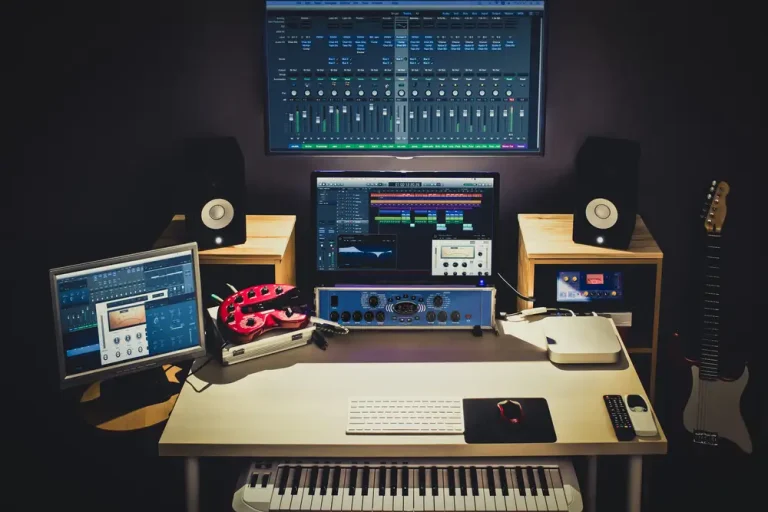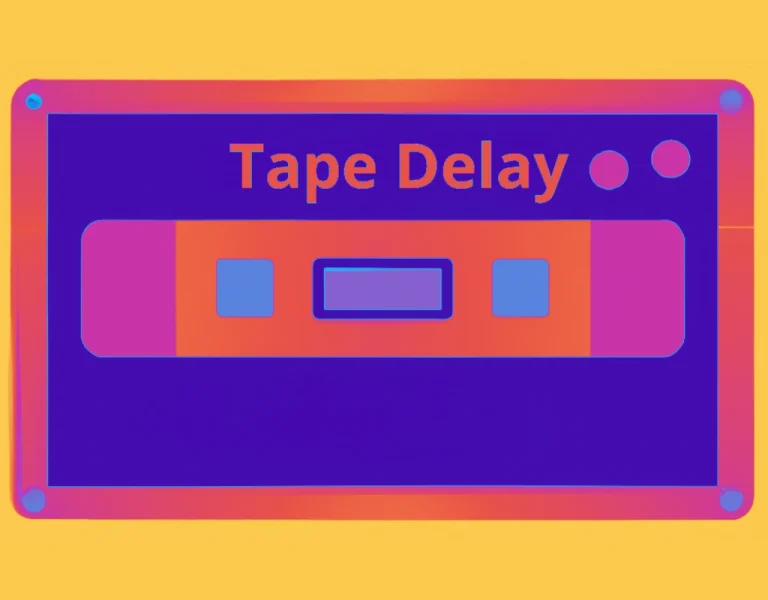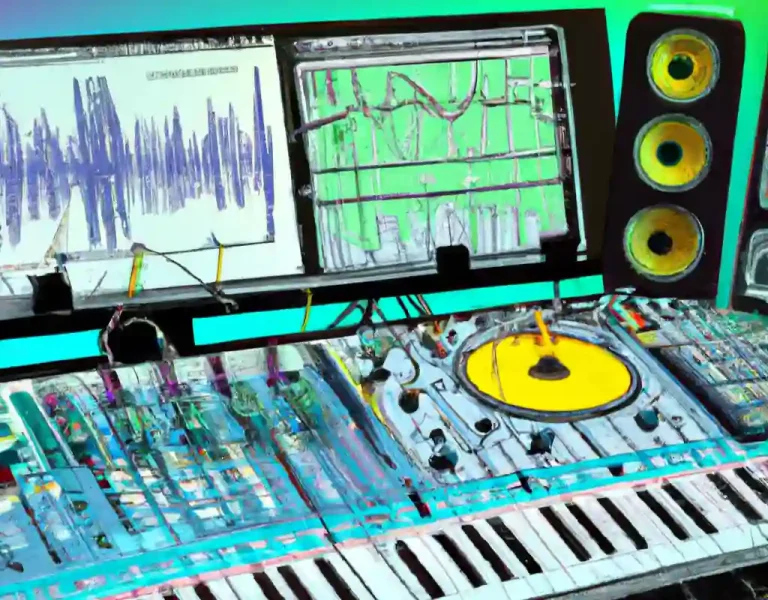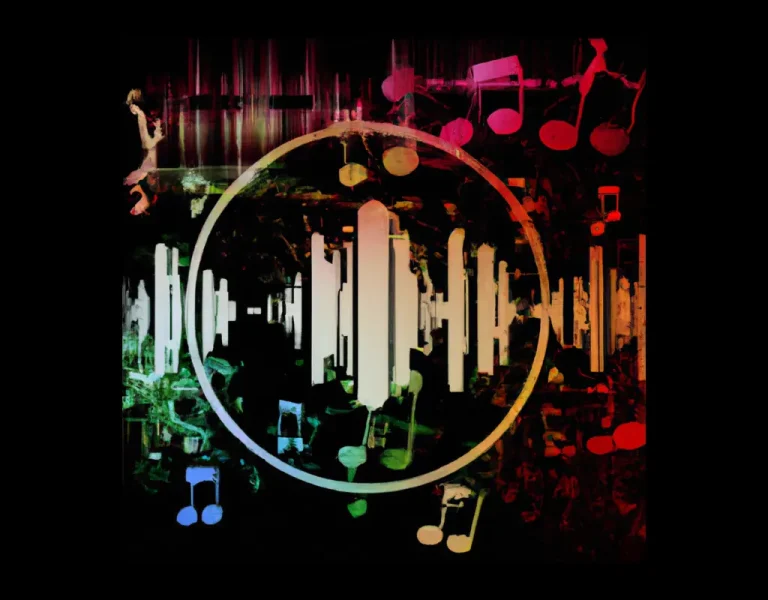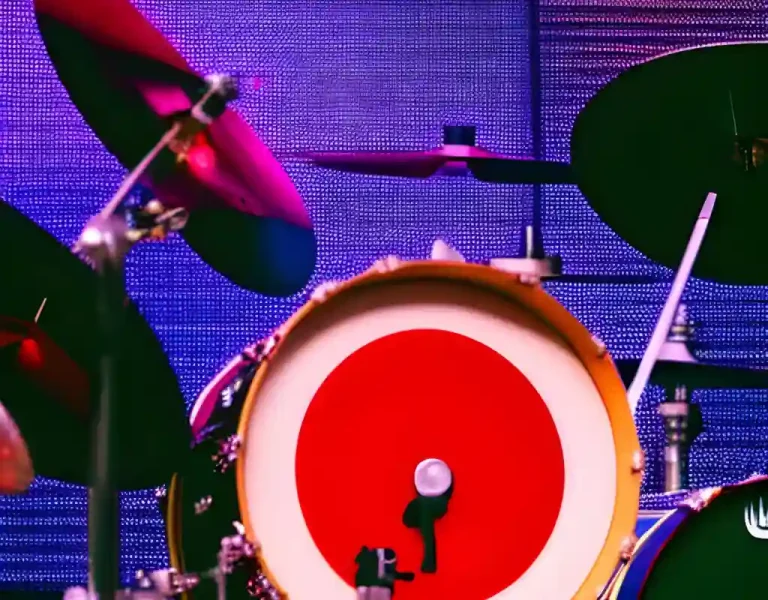Why Is Pitch In Music Important? (Easy Explanation)
Pitch in music is a term that refers to the perceived frequency of a sound or note.
But why is pitch in music important?
Pitch is one of the most important concepts in music and has been used by artists throughout history to create melodies, harmonies, and overall compositions that evoke strong emotions in listeners.
It can be described as a sound’s frequency or musical note, which musicians strive for perfection when creating their work.
Musical instruments and human perception play an integral role in how the pitch is perceived, while research into this topic has enabled us to understand its complexities better.
Learning about pitch helps develop the skills necessary to create great music; however, perfecting it requires experience combined with mathematics, literature, and science knowledge, which all come together like puzzle pieces.
Pitch in music is essential: understanding its intricacies will help elevate your production game.
Key Takeaways:
The Definition Of Pitch In Music
The definition of the pitch in music refers to the perception of how high or low a sound is. This is based on the frequency of the sound waves, with higher frequencies creating higher pitches and lower frequencies producing lower tones.
When these sound waves enter the ear, they cause the eardrum to vibrate. A vibration in the eardrum at a specific frequency ultimately determines the pitch.
Pitch is subjective and can vary depending on individual differences or cultural influences. Psychoacoustics, the study of human responses to sound, helps us understand how different people and cultures perceive sounds differently.
With practice and skill development, it is possible to perfect one’s pitch – giving rise to captivating pieces of music that can resonate with emotion.
Why Is Pitch In Music Important?
Sound frequency and musical notes are two essential concepts in music production.

Understanding the relationship between pitch and sound is paramount for crafting an effective track or composition.
Producers can craft distinctive sounds that will make their music unique by manipulating sound frequencies.
Pitch is determined by frequency measured in Hertz (Hz). The higher the Hz value, the more elevated its pitch would be.
Musical notes are specific frequencies within a range of audible pitches detectable to humans; each note has a unique Hz associated with it depending on its position on either C Major or A Minor scales – middle C being 261.63Hz, D above 293.66Hz and E below 329.
Music Note Frequency Chart
| Note | Octave 0 | Octave 1 | Octave 2 | Octave 3 | Octave 4 | Octave 5 | Octave 6 | Octave 7 | Octave 8 | ||||||||
|---|---|---|---|---|---|---|---|---|---|---|---|---|---|---|---|---|---|
| C | 16.35 | 32.70 | 65.41 | 130.81 | 261.63 | 523.25 | 1046.50 | 2093.00 | 4186.01 | ||||||||
| C# / Db | 17.32 | 34.65 | 69.30 | 138.59 | 277.18 | 554.37 | 1108.73 | 2217.46 | 4434.92 | ||||||||
| D | 18.35 | 36.71 | 73.42 | 146.83 | 293.66 | 587.33 | 1174.66 | 2349.32 | 4698.63 | ||||||||
| D# / Eb | 19.45 | 38.89 | 77.78 | 155.56 | 311.13 | 622.25 | 1244.51 | 2489.02 | 4978.03 | ||||||||
| E | 20.60 | 41.20 | 82.41 | 164.81 | 329.63 | 659.25 | 1318.51 | 2637.02 | 5274.04 | ||||||||
| F | 21.83 | 43.65 | 87.31 | 174.61 | 349.23 | 698.46 | 1396.91 | 2793.83 | 5587.65 | ||||||||
| F# / Gb | 23.12 | 46.25 | 92.50 | 185.00 | 369.99 | 739.99 | 1479.98 | 2959.96 | 5919.91 | ||||||||
| G | 24.50 | 49.00 | 98.00 | 196.00 | 392.00 | 783.99 | 1567.98 | 3135.96 | 6271.93 | ||||||||
| G# / Ab | 25.96 | 51.91 | 103.83 | 207.65 | 415.30 | 830.61 | 1661.22 | 3322.44 | 6644.88 | ||||||||
| A | 27.50 | 55.00 | 110.00 | 220.00 | 440.00 | 880.00 | 1760.00 | 3520.00 | 7040.00 | ||||||||
| A# / Bb | 29.14 | 58.27 | 116.54 | 233.08 | 466.16 | 932.33 | 1864.66 | 3729.31 | 7458.62 | ||||||||
| B | 30.87 | 61.74 | 123.47 | 246.94 | 493.88 | 987.77 | 1975.53 | 3951.07 | 7902.13 |
Instruments And Pitch Setting
Instruments are a major factor in pitch setting, as they produce sounds within a specific range based on their construction and tuning.
For example, stringed instruments like guitars or violins have six strings that can be tuned differently according to the key signature being played; slight variations occur when switching keys, adding an extra layer of creativity for producers working with traditional instrumentation.
This provides seemingly infinite sonic possibilities regardless of whether samples, synthesizers, virtual instruments, or live recordings are used.
Sound frequency and musical notes are integral components of music production, as they determine the pitch of a sound.
Musical instruments and human perception can be used to explore further how we interact with different pitches to create unique compositions.
Musical Instruments and Human Perception
Exploring how pitch affects our auditory experience is an area of study that offers insight into creating more enriching music.
Pitch, or frequency range, dramatically influences how we perceive music and is thus an essential element of sound production.
The range of frequencies perceptible to human hearing is 20 Hz – 20 kHz; anything outside this spectrum cannot be detected.
Instruments are designed with specific pitches to produce notes within the audible range for humans.
A guitar string can be adjusted by altering its length and tension; a longer, the more taut string will generate higher notes than a shorter one with less tension.
Different instruments also have unique sounds due to their construction materials and design features, like reeds on woodwinds or vibrating membranes on drumsets.
All these elements combine to create what we hear as musical tones when played through an instrument.
Musical notes are based on the twelve-tone equal temperament scale, which divides octaves into twelve equally spaced semitones (notes).
Each note has its distinct frequency determined by mathematical formulas based on physics principles such as resonance and harmonics, which helps musicians determine intervals between notes accurately without having to tune them manually every time they play something new.
Musical instruments are an effective way to communicate emotion and provoke responses from the audience.
With dedication and commitment to honing their abilities, performers can fashion captivating works of art that touch the feelings of those who hear them.
Moving forward, we will explore how understanding pitch in music is essential to achieving this goal.
Research and Perfection
Music production is a complex field, requiring research and perfection to understand the science behind pitch in music.
To become an expert producer, one must deeply understand the sound frequency and musical notes.
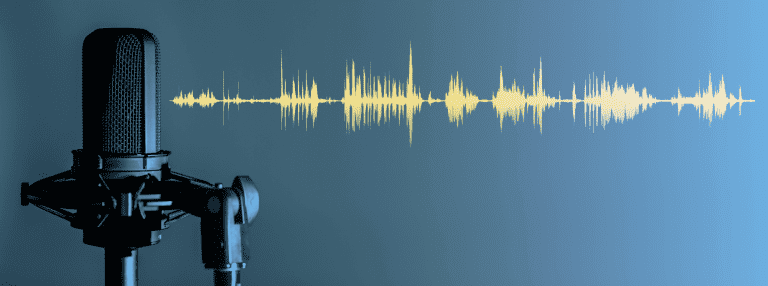
Pitch refers to tones high or lowness, determined by frequency. It’s in hertz (Hz) and makes up melody and harmony when two or more tones are played together.
Many people may be unable to detect certain pitches due to their age or physical condition, as the human sense of hearing is limited and generally does not extend beyond 20 kHz.
As such, producers need to consider this when creating music for wider audiences so everyone will appreciate the same sound quality regardless of their ability to perceive higher frequencies.
Psychoacoustics
- Psychoacoustics is the scientific study of how humans perceive and respond to sound.
- It looks at how humans interpret sound and how this influences our music experience, including how we differentiate between pitches and loudness levels, locate sounds in space, and distinguish between sounds in complex environments.
- With music production and audio engineering applications, psychoacoustics is an important field for anyone dealing with sound.
Learning and Skill Development
Learning and skill development in music production is a journey of discovery. Music producers, musicians, and beginners alike can benefit from understanding the basics of the pitch:
I. Introduction
- Pitch refers to how high or low a note sounds when played on an instrument. Humans can detect sound waves between 20 and 20 kHz, with most able to discern pitches up to 16 kHz.
- Musical notes are written on a staff with seven lines representing notes: A-B-C-D-E-F-G (or “Do R” Mi Fa So La Ti”). Each line has its frequency corresponding to a specific note name.
- Recognizing musical notes by ear requires effort, but it is helpful for any musician or producer composing their music.
- Interactive piano keyboards and other online tools can help users learn about the relationship between frequencies and musical notation.
II. Utilizing Pitch in Music
- Appreciating how instruments interact with human perception can be key in developing sound frequency and musical note recognition skills.
- Utilizing harmonious intervals such as octaves or fifths can add complexity and richness to compositions.
- Accuracy and precision are crucial for mastering pitch, as slight variations can alter the tone of the sound.
III. Pitch as an Essential Element of Music
- Research has identified pitch as both a variable and an attribute of sound.
- Pitch is an essential element of music, used to create melodies and harmonies that evoke different emotions in listeners.
IV. Learning Pitch
- Knowledgeable teachers are essential for learning pitch theory, musical notation, and vocal techniques for singing.
- Tools such as the musical keyboard and the violin help learn and practice pitch.
- Pitch training has evolved with the advent of electronic oscillation and viral load as a stimulus for improving pitch accuracy.
- Pitch training resources can be accessed online or through instructional articles published in various mediums.
V. Perfecting Pitch
- Musicians can improve their pitch recognition skills by periodically taking a break from the task and gaining new insights before continuing their creative journey.
- The piano keyboard helps train the ear to identify different pitches, while the violin requires the use of the hand and pressure to produce various notes.
- Musicians can perfect their skills and create unique compositions by researching new techniques and experimenting with harmonic intervals such as octaves or fifths.
Conclusion
In conclusion, pitch in music is an essential element determined by the sound frequency and musical notes, which various instruments can produce.
Human perception is crucial in how we interact with pitches when composing music.
Mastering pitch requires learning, skill development, research into new techniques and harmonic intervals, and practice on instruments such as the piano or violin.
The field of psychoacoustics provides insights into how humans perceive and respond to sound.
Learning to control pitch accurately requires practice, research, skill development, and perfection – all elements that make up the craft of producing beautiful music.
Any musician can learn to use this essential component of making great music with time, effort, and dedication.
Thanks for reading!
Frequently Asked Questions
How does pitch contribute to musical expression?
Pitch is a fundamental element in music that refers to a sound’s perceived highness or lowness. It allows musicians to create various emotions, moods, and dynamics in their compositions. By varying pitch, composers can convey feelings such as tension, relaxation, sadness, or happiness, ultimately impacting the listener’s overall experience.
What role does pitch play in melody and harmony?
Melody and harmony are two essential components of music that heavily rely on pitch. Melody is a sequence of pitches played in a particular order, creating a memorable tune or theme. Harmony, conversely, involves combining different pitches that support and enhance the melody. The proper use of pitch in melody and harmony allows for creating of expressive, interesting, and captivating music.
Why do different instruments have varying pitch ranges?
Each musical instrument produces sound by vibrating at specific frequencies, in turn creating various pitches. The pitch range of an instrument is the collection of all possible pitches it can produce. Different instruments have varying pitch ranges due to their unique physical properties, such as size, shape, and material, as well as the playing techniques associated with each instrument.
How does pitch affect the musical texture?
Musical texture refers to the layering of different musical elements, such as melody, harmony, rhythm, and dynamics. Pitch plays a significant role in defining the overall texture of a piece. For example, using a wide range of pitches can create a rich, dense texture, while limiting the use of pitches can result in a sparse, minimalistic texture. The strategic arrangement of pitches in different registers contributes to the overall atmosphere and depth of a musical composition.
Why is it crucial to maintain an accurate pitch while singing?
Accurate pitch is essential while singing because it ensures the melody and harmony blend seamlessly in a musical performance. Poor pitch control can lead to dissonance or an out-of-tune sound that distracts from the intended emotional impact of the song. Inaccurate pitch may also make it challenging for the singer to connect with their audience or other musicians in ensemble performances.
How does pitch perception impact emotion in music?
The way a listener perceives pitch can significantly influence their emotional response to a piece of music. Pitch perception plays a role in communicating the intended mood or message of a composition to the listener. For example, higher-pitched melodies often evoke feelings of happiness and excitement, while lower-pitched sounds can create a sense of sadness or calmness. Pitch perception is an important aspect of music that allows it to communicate emotions and convey meaning effectively.
References
http://uoneuro.uoregon.edu/wehr/coursepapers/Rasch-Plomp.html



